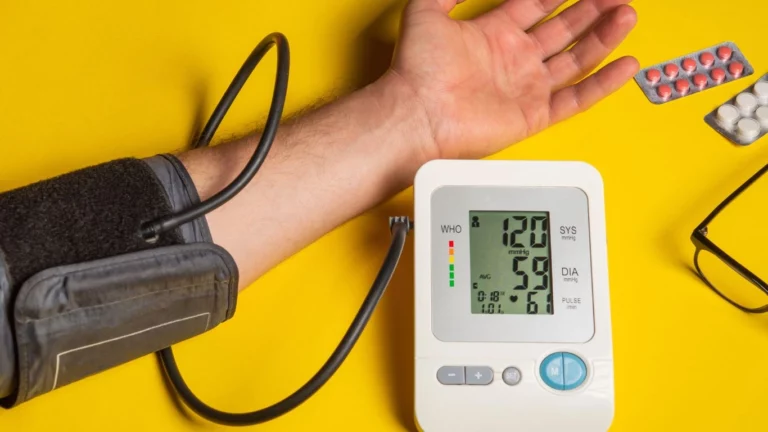How Rheumatoid Arthritis Can Lead to Bone Loss Over Time
Rheumatoid arthritis (RA) is more than joint pain. It’s a chronic autoimmune condition that quietly affects other parts of the body—including bone health. Over time, many people with RA experience bone loss, which can lead to increased risk of fractures and a condition known as osteoporosis.
This connection between RA and bone weakening can feel unsettling. But understanding what’s happening inside the body is a powerful first step in managing it. With the right care and knowledge, it’s possible to slow the process and protect your bones.
Signs and Symptoms
Bone loss doesn’t always announce itself with obvious symptoms. It can develop slowly, often without pain or warning signs in the early stages. In the context of RA, however, certain clues may point toward weakening bones.
- Increased joint pain and stiffness beyond usual RA flares
- Loss of height over time
- Fragility or easy bone fractures, especially in the spine or wrists
- Fatigue and general weakness
- Unexplained back pain
Not every person with RA will experience these symptoms, but being aware of them can lead to earlier conversations with a healthcare provider.
Causes
RA contributes to bone loss in several ways. Some are direct, tied to inflammation, while others are more subtle, involving lifestyle or treatment choices made over time.
- Chronic inflammation: RA triggers an immune response that mistakenly attacks the body’s own tissues. This ongoing inflammation can disrupt the natural process of bone remodeling, where old bone is replaced with new.
- Cytokines: These are chemical messengers involved in inflammation. In RA, cytokines like TNF-alpha and interleukin-6 play a major role in bone resorption—the breakdown of bone tissue.
- Reduced physical activity: Stiff, painful joints can limit movement. Less activity leads to weaker bones, as they aren’t being regularly stressed and strengthened by weight-bearing movement.
- Medications: Some RA treatments, particularly long-term use of corticosteroids, can contribute to thinning bones over time.
- Hormonal changes: Especially in women, RA can coincide with menopause, another factor that naturally leads to lower bone density.
Understanding these overlapping factors helps make sense of why bone loss may progress more quickly in someone with RA than in the general population.
When to Get Help
Bone loss is often silent—but you don’t have to wait for a fracture to seek help. If you live with RA and are concerned about your bone health, it’s worth speaking with a healthcare professional. A few signs make that conversation even more important:
- You’ve experienced a recent fall or fracture
- Your RA symptoms are getting worse
- You’ve been on corticosteroids for more than a few months
- You’ve entered menopause or are postmenopausal
- You have a family history of osteoporosis
Doctors may recommend a bone density test, also called a DEXA scan, to measure how strong your bones are. This test is simple, non-invasive, and can help guide your treatment plan.
Treatment
Treating bone loss in the context of RA is a team effort. It often involves rheumatologists, primary care providers, and sometimes endocrinologists or bone specialists. The goal is to protect your joints while preserving bone strength.
Treatment strategies may include:
- Anti-inflammatory medications: Drugs like DMARDs (disease-modifying antirheumatic drugs) and biologics target the inflammation at the root of RA, helping reduce its impact on bones.
- Bone-building medications: In cases of diagnosed osteoporosis or significant bone loss, medications like bisphosphonates or newer agents may be recommended.
- Calcium and Vitamin D: These nutrients support bone health. Your provider might suggest supplements if dietary intake isn’t enough.
- Exercise: Gentle weight-bearing activities like walking, yoga, or tai chi can help maintain bone density without putting too much strain on joints.
- Lifestyle support: Avoiding smoking, limiting alcohol, and eating a balanced diet are all protective steps.
Your treatment plan should feel personalized and manageable. Small changes often add up over time, especially when they align with your body’s needs.
Everyday Support
Living with RA and managing bone health can be challenging—but it’s not a journey you have to take alone. Family, friends, physical therapists, and dietitians can all play a role in your care.
Practical strategies that help day to day include:
- Using joint-friendly tools to reduce strain during chores
- Planning meals rich in calcium, protein, and leafy greens
- Taking breaks during the day to stretch and move gently
- Talking openly with your doctor about medication side effects
- Keeping up with regular checkups and screenings
It’s also okay to ask for help. You don’t have to manage everything at once. Each small step can bring greater stability and peace of mind.
The Bigger Picture
RA is a lifelong condition, but its impact doesn’t have to define your health story. Bone loss is a serious concern, yet one that can often be slowed or even prevented with the right approach.
Studies have shown that managing inflammation early and consistently can make a real difference—not just in pain levels, but in long-term bone strength. This is one reason why sticking to treatment and communicating with your care team matters so much.
Living with RA takes resilience. Every choice you make—to eat well, to keep moving, to stay informed—helps support your body’s strength from the inside out.
If you ever feel unsure, overwhelmed, or concerned about your bone health, reaching out to a medical provider is a meaningful step. You deserve care that supports your whole self, not just your joints.

Tarra Nugroho is a dedicated Nurse Practitioner with a strong foundation in family and preventive care. She brings both compassion and clinical expertise to her practice, focusing on patient-centered care and health education. As a contributor to Healthusias.com, Tarra translates medical knowledge into clear, empowering articles on topics like women’s health, chronic disease management, and lifestyle medicine. Her mission is simple: help people feel seen, heard, and informed—both in the clinic and through the content she creates. When she’s not caring for patients, Tarra enjoys weekend hikes, plant-based cooking, and curling up with a good health podcast.






